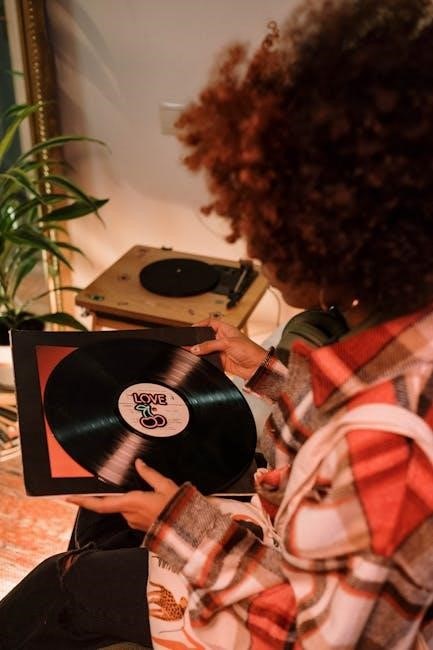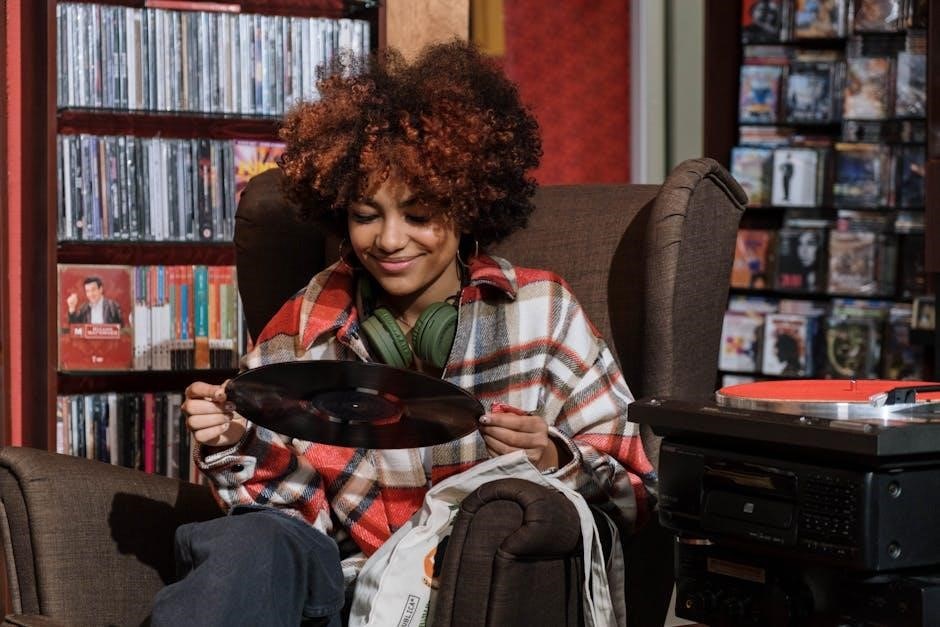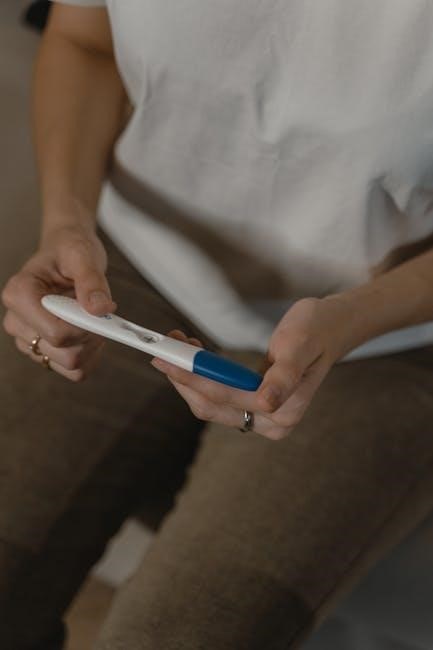
Mastering vinyl shirt placement is essential for creating professional designs. This guide covers tools, materials, and techniques to ensure precise alignment and perfect prints every time.
Importance of Proper Vinyl Placement
Proper vinyl placement ensures a professional finish, prevents design misalignment, and enhances durability. Accurate alignment avoids crooked prints, boosts visual appeal, and maintains fabric integrity. Using guides and reference points is crucial for achieving precise results, especially for HTV and sublimation designs. Proper placement also prevents costly reprints and ensures designs last longer on various shirt styles and fabrics.
Overview of Printable Guides
Printable guides offer a practical solution for achieving precise vinyl placement. These templates, available for free or purchase, provide clear reference points for aligning designs on shirts. They cater to various shirt sizes, styles, and fabric types, ensuring accurate placement for HTV, sublimation, and other techniques. Printable guides help reduce errors and save time, making them indispensable for both beginners and professionals.

Tools and Materials Needed
Essential tools include t-shirt rulers, heat presses, measuring tapes, and printable guides. Materials like heat transfer vinyl, sublimation paper, and a Print Perfect Pad ensure precise placement and alignment.
T-Shirt Rulers and Alignment Tools
T-shirt rulers and alignment tools are crucial for achieving precise vinyl placement. They help measure and center designs accurately. DIY rulers from cardstock or plastic mats work well, while store-bought options offer durability. Testing different rulers ensures the best fit for your needs and budget. Free printable guides, like JenniferMaker’s templates, simplify the alignment process for perfect results every time.
Heat Press and Printing Equipment
A heat press is essential for transferring vinyl designs onto shirts. Ensure proper settings for temperature, pressure, and time to achieve vibrant, long-lasting results. Direct-to-garment printing is another method, requiring pre-treatment for optimal ink adhesion. For smaller designs, a Print Perfect Pad or mouse pad can elevate the print area, ensuring even pressure distribution during the pressing process.
Measuring Tapes and Calibration Tools
Measuring tapes and calibration tools are crucial for accurate vinyl placement; Use a tape to measure shirt dimensions and design sizes, ensuring proper alignment. Calibration tools help fine-tune your heat press, preventing misalignment. Regularly check and adjust your equipment to maintain precision and achieve professional-quality results in your vinyl shirt printing projects.
Printable Placement Guides and Templates
Printable guides and templates simplify vinyl placement. Download free T-shirt ruler guides or create custom templates from cardstock. These tools help determine design size, ensure proper alignment, and achieve precise placement. Use them to avoid mistakes and enhance the professionalism of your vinyl shirt designs, whether for personal projects or professional orders.
Understanding Design Size and Proportions
Proper sizing ensures designs look great on all shirt sizes and fabric types. Use printable guides to determine optimal dimensions and proportions for flawless placement and professional results.
How to Measure Your Shirt for Accurate Placement
Begin by laying the shirt flat and folding it in half to find the center. Measure across the chest from armpit to armpit for design width. For the back, measure from the base of the collar to the hem. Use a flexible tape for sleeves, wrapping it around to find circumference. Printable guides and rulers help visualize placement, ensuring designs align straight and proportionally. Consider fabric type for adjustments, using reference points like seams for precise alignment.
Choosing the Right Design Size for Different Shirt Sizes
Ensure designs are proportional by measuring shirts and selecting sizes accordingly. Use printable guides to visualize placement and scale. For smaller shirts, opt for narrower widths, while larger shirts can accommodate bigger designs. Consider fabric type and design visibility. Standard sizes often range from 6-12 inches for chests and 12-15 inches for backs. Always test and adjust for clarity and balance.
Standard Print Locations for Shirts
Standard locations include chest, back, sleeves, and hemlines, ensuring designs are visible and balanced. Measure shirts to align prints accurately for professional results.
Common Placement Areas (Chest, Back, Sleeve)
Chest placements are typically centered 3-4 inches below the collar. Back designs are often larger, spanning the upper to mid-back area. Sleeves are aligned along the center seam, about 2-3 inches above the cuff. Accurate measurements ensure balanced and professional-looking prints on all areas of the shirt.
Centered vs. Offset Designs
Centered designs create a clean, professional look and are ideal for logos or symmetric patterns. Offset designs add a stylish, modern touch, often used for casual or artistic prints. Choosing between centered and offset depends on the design’s purpose and the desired aesthetic. Proper alignment tools ensure accuracy for both styles, enhancing the final result.
Print Locations for Different Shirt Styles
Common print locations include chest, back, and sleeves. For crew necks, designs are often centered on the chest or upper back. V-necks suit smaller logos near the collar. Hoodies may feature designs on the upper back or front pocket area. Scoop necks allow for bold graphics across the chest. Fabric type and design size should align with the shirt style for optimal visibility and comfort.
Aligning Text and Graphics Properly
Use rulers or alignment tools to ensure text and graphics are straight and centered. Fold the shirt to locate the center point for symmetric designs. Double-check measurements and test print on scrap fabric. Use reference points or grids for precise placement. Ensure text is readable and graphics are visually balanced, avoiding distortion or crookedness for professional results.
Considering Fabric Type and Design Visibility
Fabric type and thickness impact design visibility. Use PU heat transfer vinyl for stretchy materials and ensure designs are large enough for thick fabrics. Light colors and smooth finishes enhance visibility, while dark or textured fabrics may require specific vinyl types. Always test designs on scrap fabric to ensure clarity and adhesion before final application.
Materials and Their Impact on Placement
Heat transfer vinyl (HTV) and sublimation are popular choices. HTV works well on various fabrics, while sublimation suits synthetic materials. Choose materials that complement fabric type for optimal results.
Heat Transfer Vinyl (HTV) vs. Sublimation
Heat Transfer Vinyl (HTV) is durable and versatile, suitable for cotton, polyester, and blends. Sublimation offers vibrant, long-lasting colors but works best on synthetic fabrics. HTV is easy to cut and weed, while sublimation requires higher temperatures for permanent bonding. Choose based on fabric type and desired design longevity for optimal results.
PU Heat Transfer Vinyl for Stretchy Fabrics
PU Heat Transfer Vinyl is ideal for stretchy fabrics, offering softness and flexibility. It moves with the fabric, preventing cracks and ensuring a comfortable feel. Perfect for activewear or stretchy materials, PU HTV provides durable, vibrant prints while maintaining fabric mobility, making it a top choice for designs requiring both style and functionality.

Centering Designs on Shirts
Folding the shirt in half lengthwise and pinching the center helps achieve perfect alignment. This technique ensures designs are centered accurately for a professional finish.
Folding and Pinching Technique for Center Alignment
Fold the shirt in half lengthwise, then fold it again widthwise to locate the center. Pinch the folded edge to mark the midpoint. Unfold and use a ruler or guide to align your design with the center point. This method ensures precise placement for a professional finish. Marking the center helps avoid misalignment during printing.

Using T-Shirt Rulers for Perfect Alignment
T-shirt rulers are essential tools for accurate vinyl placement. They help measure and position designs symmetrically, ensuring straight and centered prints. Versatile and easy to use, rulers are a must-have for achieving professional results.
DIY T-Shirt Ruler Guides
Creating custom T-shirt rulers is simple and cost-effective. Use materials like cardstock or plastic chopping mats to craft guides tailored to your needs. These rulers help ensure accurate vinyl placement, centering designs effortlessly. Perfect for crafters and small businesses, DIY guides offer versatility for HTV, sublimation, or iron-on projects, ensuring professional results without extra costs.
Testing Different T-Shirt Rulers for Accuracy
Testing various T-shirt rulers helps determine their accuracy and suitability for your needs. Evaluate alignment precision, ease of use, and durability. Compare rulers for HTV and sublimation projects, ensuring they fit your budget. This process guarantees you find the best tool for perfectly aligned designs, enhancing your crafting or small business operations.

Printable Placement Guides
Printable guides offer precise templates for vinyl alignment, ensuring accuracy and consistency. They help achieve perfect center alignment and proper design sizing, available for free online.
Free Printable Decal Placement Guides
Download free printable decal placement guides to ensure accurate vinyl alignment. These templates help achieve perfect centering and sizing for various shirt styles. Customize them for different designs and fabric types, ensuring professional results. Available online, they simplify the placement process for DIY enthusiasts and professionals alike, offering versatility for HTV, sublimation, and more. Easily print and use them today!

Tips for Perfect Vinyl Alignment
Tips for Perfect Vinyl Alignment
- Use reference points and grids for precise placement.
- Employ the triple reference technique for accuracy.
- Avoid crooked prints with proper alignment tools.
Using Reference Points and Grids
Reference points and grids are essential for achieving precise vinyl alignment. Use a T-shirt ruler or printable guide to mark center points and edges. Ensure symmetry by aligning designs with the shirt’s natural folds. For multi-color designs, create a grid system to layer elements accurately. This method minimizes errors and enhances professionalism in your vinyl placements.
How to Avoid Crooked Prints
To prevent crooked prints, ensure proper preparation and alignment. Use a T-shirt ruler or printable guide to mark center points and edges. Fold the shirt to find the center and align designs symmetrically. Double-check placement before pressing and consider using a grid system for multi-color designs. This ensures straight, professional-looking results every time.
Triple Reference Technique for Accuracy
The triple reference technique involves using three alignment points: the shirt’s center, left edge, and right edge. This method minimizes errors by ensuring designs are straight and evenly spaced. Measure and mark each reference point before placement, then align your vinyl accordingly for precise, professional-looking results every time.

Common Mistakes to Avoid
Incorrect measurements, misaligned designs, and improper heat press settings are frequent errors. Ensure accurate sizing and placement to achieve professional results and avoid costly retries.
Misaligning Designs Due to Incorrect Measurements
Incorrect measurements are a common issue, leading to misaligned designs. Always measure shirts carefully, use printable guides, and double-check sizing. Folding shirts to find the center ensures accurate placement. Using improper rulers or miscalculating design proportions can result in crooked prints. Verify measurements before pressing to avoid wasted materials and time-consuming reprints.

Advanced Techniques for Vinyl Placement
Explore multi-color designs, layering, and unique placement ideas for professional results. These techniques enhance creativity and precision, ensuring standout vinyl shirt designs.
Multi-Color Designs and Layering
Creating multi-color designs involves layering vinyl for vibrant, detailed prints. Use alignment tools and guides to ensure each layer is perfectly positioned. Start with the base color, then add subsequent layers, allowing each to cool before applying the next. This technique works best with HTV and requires precise temperature control for durability and finish.
Custom Designs and Unique Placement Ideas
Explore creative freedom with custom vinyl designs, experimenting with unique placement areas like sleeves, hemlines, or even pockets. Use printable guides to achieve precise alignment for intricate multi-color designs. Layering techniques and personalized templates allow for one-of-a-kind styles, ensuring your shirts stand out with originality and flair.

Troubleshooting Vinyl Placement Issues
Identify common issues like misalignment and fabric incompatibility. Learn to adjust designs, fix prints, and ensure proper fit and visibility with practical solutions.
Fixing Misaligned Prints
Fixing misaligned prints requires checking shirt centering and adjusting vinyl placement. Use a triple reference technique for accuracy and ensure proper heat press calibration. Gently reposition vinyl, if needed, before reapplying heat to achieve a crisp, straight design.
Adjusting for Different Fabric Types
Different fabrics require tailored approaches. For stretchy materials, use PU heat transfer vinyl. Cotton and polyester benefit from standard HTV, while silk or rayon may need sublimation. Adjust placement based on fabric thickness and texture. Use a mouse pad or Print Perfect Pad for even pressure. Ensure designs align with fabric grain for optimal results and visibility.
Solving Common Placement Problems
Addressing placement issues is crucial for professional results. Use reference points and grids to prevent crooked prints. Ensure designs are centered and aligned with fabric grain. For stretchy fabrics, opt for PU vinyl. Adjust heat press settings for different materials. Utilize T-shirt rulers or alignment guides for precise placement. Test designs on scrap fabric before final application to avoid errors;
Step-by-Step Guide to Vinyl Placement
This guide provides a detailed process for accurate vinyl placement, ensuring professional results. It covers preparing your shirt, aligning designs, applying heat, and post-application care.
Preparing Your Shirt and Design
Ensure the shirt is clean and dry for optimal adhesion. Pre-treat fabrics if necessary, especially for direct-to-garment printing. Use a T-shirt ruler guide to align designs accurately. Edit and finalize your design, ensuring it’s mirrored for HTV. Import the design into cutting software and adjust settings for material type. Raise the print area with a pad for proper heat press alignment.
Aligning the Design Using Guides
Use a T-shirt ruler or printable guide to ensure precise alignment. Fold the shirt in half to find the center point. Place the design on the guide, ensuring it’s straight and centered. Double-check measurements and adjust as needed. Proper alignment prevents crooked prints and ensures professional-looking results.
Applying Heat for Transfer
Preheat your heat press to the recommended temperature. Place the shirt on the press, ensuring the design aligns with the center. Apply even pressure and heat for the specified time. Use a thermal tape for stability. Avoid over-pressing to prevent damage. Once done, let the shirt cool before handling to ensure the vinyl adheres properly.
Inspecting and Adjusting the Final Placement
After applying heat, carefully inspect the design for proper alignment and adhesion. Check for any air bubbles or wrinkles. If needed, adjust the placement gently while the vinyl is still warm. Ensure the design is centered and straight. Allow the shirt to cool completely before handling to confirm the final placement is accurate and secure.
Post-Application Care Instructions
For long-lasting results, wash shirts inside out using cold water and mild detergent. Avoid bleach and harsh chemicals. Do not soak or scrub the design area. Air dry or tumble dry on low heat. Iron inside out on a low setting, avoiding direct contact with the vinyl. Proper care ensures durability and vibrant appearance.

Best Practices for Vinyl Shirt Placement
Use high-quality materials and ensure proper heat press settings for optimal results. Always test designs on spare fabric before applying to the final shirt for consistency and accuracy.
Using High-Quality Materials
Investing in high-quality vinyl, such as PU Heat Transfer Vinyl, ensures durability and vibrant designs. It’s perfect for stretchy fabrics, providing a soft, flexible finish. Always use printable guides to achieve precise placement and consistency, especially for intricate or layered designs. This approach guarantees professional results and extends the lifespan of your custom shirts.
Ensuring Proper Heat Press Settings
Correct heat press settings are crucial for vinyl adhesion. Use the recommended temperature (typically 280-320°F) and pressure for your vinyl type. Adjust time based on material thickness. Ensure the platen fits the shirt size and use a Print Perfect Pad or mouse pad for even pressure. Proper settings prevent peeling and ensure long-lasting, professional results.
Mastering vinyl shirt placement requires attention to detail, proper tools, and practice. By following guides, using quality materials, and adjusting heat press settings, you can achieve professional results. Remember, precise alignment and correct techniques ensure durability and visual appeal. Printables and rulers simplify the process, helping you create stunning designs with confidence. Happy crafting!